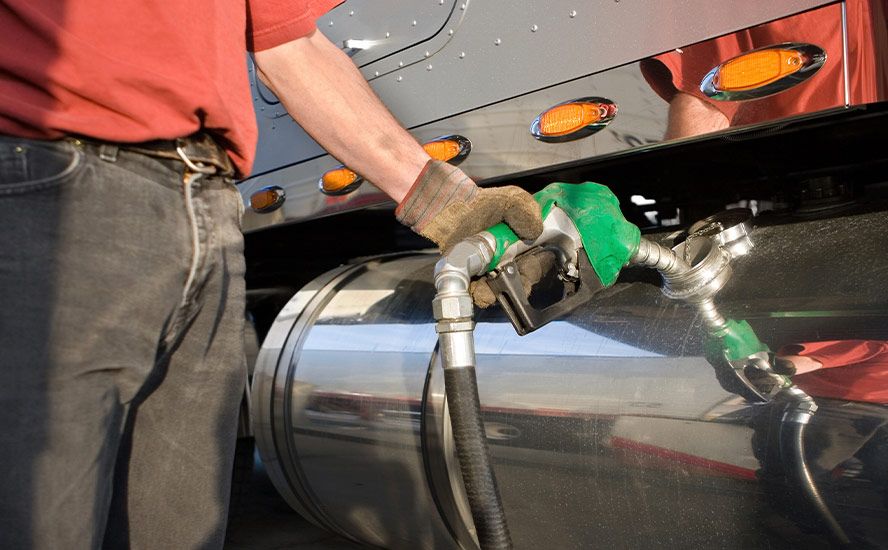
How IoT is Transforming Fleet Management in the Auto Industry
The Internet of Things (IoT) has transformed the automotive industry, particularly in the realm of fleet management. IoT technologies enable organizations to efficiently monitor, track, and manage their fleets, optimizing overall performance and reducing operational costs. Here are some key applications of IoT in fleet management:
Vehicle Tracking and Routing

Vehicle tracking and routing are key components of fleet management, involving the real-time monitoring of vehicle locations and the optimization of travel routes. By utilizing GPS devices and advanced mapping software, fleet managers can improve efficiency, reduce travel times, and lower fuel consumption, ultimately enhancing overall operations and cost-effectiveness.
IoT-enabled GPS tracking devices provide real-time location data, allowing fleet managers to monitor vehicle locations and optimize routing. This improves fuel efficiency, reduces travel time, and increases overall productivity. Geofencing features can also alert managers when a vehicle enters or exits a predefined area, improving security and compliance.
Predictive Maintenance

IoT sensors installed in vehicles can monitor various parameters, such as engine temperature, tire pressure, and battery health. This data is analyzed to predict potential maintenance issues before they become critical. By addressing problems early, fleet managers can minimize downtime and reduce repair costs.
Fuel management

Fuel management is a critical aspect of fleet operations that involves monitoring, controlling, and optimizing fuel consumption to minimize costs and reduce the environmental impact. This process is crucial for businesses and organizations that rely on transportation, as fuel expenses often represent a significant portion of their operational costs. Efficient fuel management can help identify areas for improvement, reduce fuel wastage, and promote eco-friendly practices, ultimately contributing to the overall success and sustainability of the organization.
To achieve effective fuel management, fleet operators employ various tools and strategies, such as IoT-enabled sensors, GPS tracking devices, and advanced analytics. These technologies allow for real-time monitoring of fuel consumption, taking into account factors such as vehicle type, engine performance, driving behavior, and environmental conditions. With this data, fleet managers can make informed decisions about route optimization, vehicle maintenance, and driver training, ultimately improving fuel efficiency and reducing operational costs. Furthermore, organizations can leverage fuel management systems to ensure compliance with regulatory requirements, such as emissions standards and fuel tax reporting, further enhancing their operational efficiency and sustainability.
Fleet managers can use this information to identify areas for improvement and implement changes, such as optimizing routes or encouraging more efficient driving habits.
Driver monitoring and safety

Driver monitoring refers to the process of observing and analyzing a driver's behavior and performance while operating a vehicle. This is typically achieved through the use of sensors, cameras, and software systems that collect data on various aspects of the driver's actions and vehicle operation. The primary goal of driver monitoring is to ensure safety, improve efficiency, and reduce the risk of accidents by identifying and addressing risky or inefficient driving habits.
IoT devices can track driver behavior, including speeding, harsh braking, rapid acceleration, and cornering. This information helps fleet managers identify risky driving habits and take corrective action, reducing the likelihood of accidents and improving overall safety. Some systems also include in-cab coaching, providing real-time feedback to drivers.
Remote diagnostics
Remote diagnostics is a technology that enables the identification, analysis, and troubleshooting of problems in a device, system, or vehicle from a remote location. This is accomplished through the use of sensors, software, and communication networks that transmit real-time data from the device to a centralized monitoring system or service center.
IoT sensors can remotely diagnose vehicle issues by transmitting data on engine performance, emissions, and other parameters to a centralized system. This enables fleet managers to make informed decisions on when a vehicle requires servicing or repairs, potentially preventing catastrophic failures.
Compliance and regulation
IoT solutions can help fleets comply with regulatory requirements, such as hours of service, electronic logging devices (ELD), and emissions standards. By automating data collection and reporting, organizations can ensure they meet these requirements and avoid costly fines.
Asset management

Asset management is a systematic process of developing, operating, maintaining, upgrading, and disposing of assets in the most cost-effective manner. It involves the management of physical assets (such as buildings, vehicles, equipment, and infrastructure) and intangible assets (such as intellectual property, financial assets, and human capital) to achieve an organization's strategic goals.
In the context of a business or organization, asset management focuses on maximizing the value and performance of assets while minimizing the risks and costs associated with owning and operating them.
IoT devices can track assets such as trailers, containers, and equipment. This helps fleet managers efficiently allocate resources, track utilization, and minimize asset loss or theft.
Environmental impact
IoT can help fleets reduce their environmental impact by monitoring emissions and fuel consumption. Fleet managers can use this data to identify areas for improvement and implement greener practices, such as switching to alternative fuel vehicles or promoting eco-driving habits.
Integration with other systems
IoT data can be integrated with other business systems, such as enterprise resource planning (ERP) and customer relationship management (CRM) software. This allows organizations to streamline operations and improve decision-making based on real-time, data-driven insights.